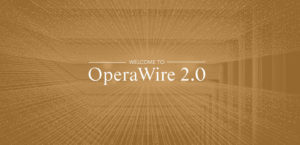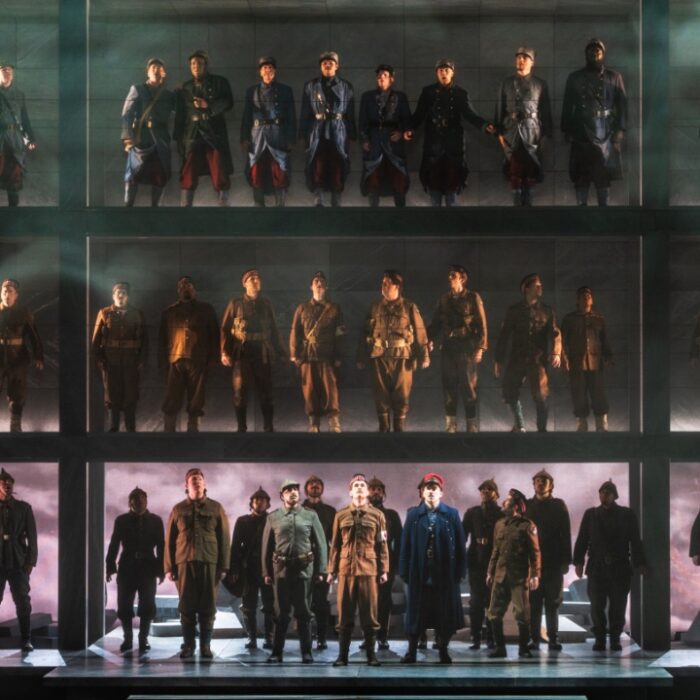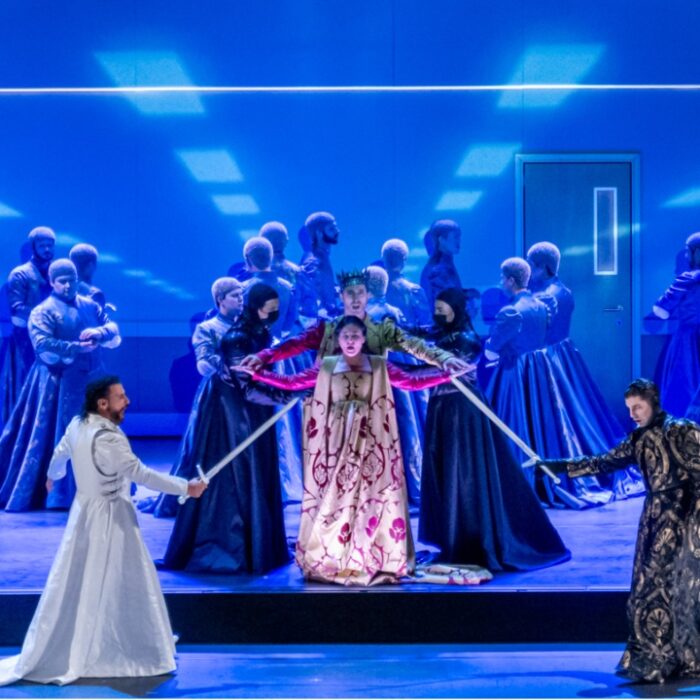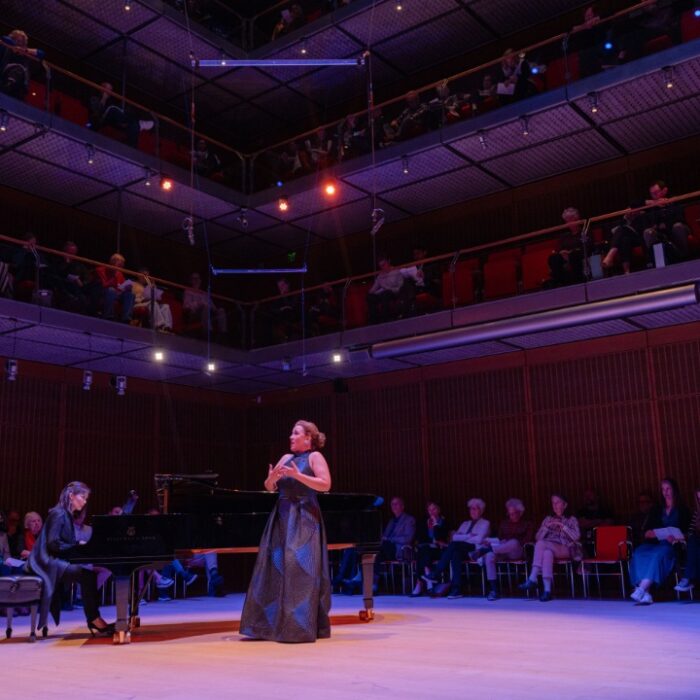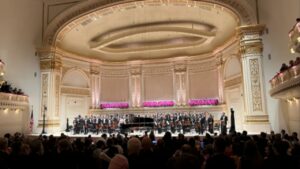
Carnegie Hall 2025-26 Review: Opening Night
By Maayan Voss de BettancourtCarnegie Hall’s season opened on October 7th with a concert of hits—the theme was literally works that were pivotal to their respective composers’ careers—performed by all-star alumni from the National Youth Orchestra and Yuja Wang, conducted by Daniel Harding. The excellent lineup was Selections from “West Side Story,” followed by Tchaikovsky’s “Piano Concerto No. 1,” and concluded with Stravinsky’s “Firebird” Suite.
The concert began not with a bang, but with a wish. The “West Side Story” suite starts gently, with the haunting choice to give the theme from “Somewhere” to the viola. It feels poignant in our current climate to begin a season with the hope (voiced by a Puerto Rican character) that “there’s a place for us,” and principal violist Celia Daggy beautifully communicated that with her playing. The whole piece was so lush, and the Mambo was infectious. Harding really brought out the fun and dynamism in these selections, to the point where even the danger zone of cringe when the orchestra shouts “mambo!” felt natural and authentic.
One of the most striking things about the orchestra was how perfectly cohesive they were the entire concert. They were one unit. If you didn’t know better, you would guess these musicians played together full time. The other constant delight was how dynamic their playing was. The fortissimos were huge and blew you back in your seat. (I even heard concertgoers near me comment on it in the breaks.) And on the other end, the quiet moments had the audience holding their breath. A testament to the skill of not just Harding, but the entire lineup of musicians. Bravi tutti, from first chair to last.
What to say about Yuja Wang that hasn’t been said a thousand times before? She crushed the Tchaikovsky, making it look easy. There’s a reason she’s so sought-after. She doesn’t just play warhorses, she makes it look like she REVELS in them. There’s a joy and ease to her playing that really draws you in. One of my favorite aspects of her performance was how much she clearly enjoyed leading and working with the orchestra. Her directing was integrated into her playing—as she lifted at the end of a phrase, that gesture would gracefully turn into her conducting for the next section. At bows, she absentmindedly accepted the bouquet of flowers brought out for her and kept right on acknowledging the soloists in each section, beaming and applauding them herself. Rightly so; the orchestra continued to show off, with a crisp and delicate woodwind section interlude in the Andantino semplice, and plenty of opportunity to shine as individuals in the solos. They swept up the listeners so deeply into the music that this audience of veteran concertgoers clapped after the first movement. And since the orchestra was listening so intently the entire time, the balance was absolutely perfect throughout.
“The Firebird” Suite began with its signature delightfully ominous bass line, which the bass section played so intensely softly that you felt it before you heard it. This piece is a staple for a reason, and the lushness, dynamics, and virtuosity of this orchestra was on full display. The Infernal Dance of King Kashchei was an infectiously fun standout, as was the chilling bassoon solo in the Lullaby and the hopeful horn solo in the Finale. The whole finale was utterly gorgeous. This group of musicians truly specializes in sound that overwhelms you on a physical level, and “The Firebird” really played to that strength. A deeply thrilling end to a beautiful concert.
